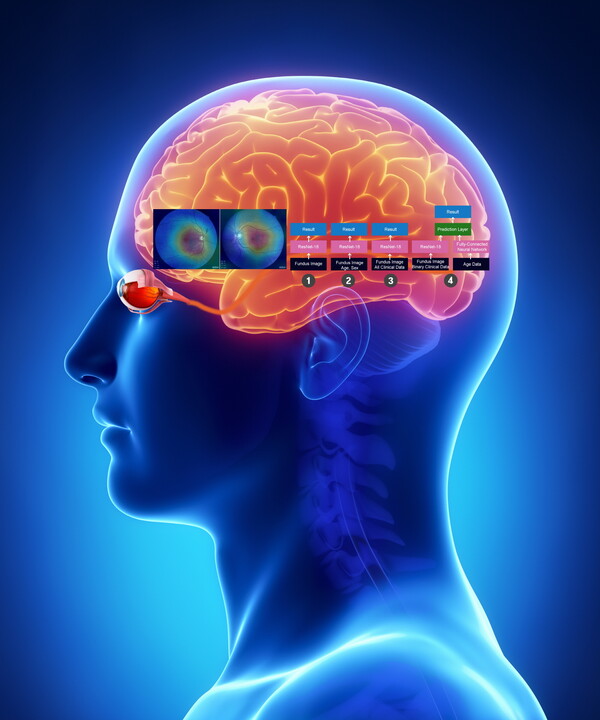Researchers from Kangbuk Samsung Hospital and Sungkyunkwan University said they have developed an algorithm to measure central nervous system (CNS) dysfunction in patients with Parkinson's disease through fundus images, "for the first time in the world."

Since the retina of the eye allows doctors to directly see the blood vessels in the body non-invasively, there have been various attempts to check the systemic vascular status through a simple retinal examination.
Many studies have used fundus images to predict cardiovascular disease risk.
However, unlike cardiovascular studies, there have been few retina studies related to neural diseases.
The research team, led by Professors Yoon Won-tae and Song Su-jeong at the hospital and Shin Ji-tae at the university, analyzed brain function-related images, CNS motor function assessment results, and fundus photographs of 266 patients with Parkinson's disease who visited the Department of Neurology at Kangbuk Samsung Hospital between October 2020 and April 2021.
Based on the information, the team analyzed correlations with basic patient information such as age and gender, and finally developed an AI algorithm to predict the motor function status of Parkinson's-related symptoms from fundus images.
As a result, by putting basic information such as fundus images, age, and gender into the algorithm, the algorithm was able to automatically predict the patient's Hoehn and Yahr (H-Y) scale and Unified Parkinson's Disease Rating Scale part III (UPDRS-III) scores, which are measures of motor function in the CNS related to Parkinson's disease.
Despite the limitations of using data from a small number of patients, the algorithm showed a high accuracy rate of nearly 0.8 in predicting both measures of neurological motor function.
"The significance of this study is that we have been able to conduct various studies on the connection between Parkinson's disease, a typical neurodegenerative disease, and the eye through artificial intelligence methodology," Professor Song said.
It is also clinically important because it is possible to directly or indirectly check the neurological function of the CNS through fundus examination, she added.
Song stressed that her team will conduct additional research to identify clinically relevant relationships between Parkinson's disease and other neurological disorders and the eye.
The study was published in the February issue of JAMA Ophthalmology.

